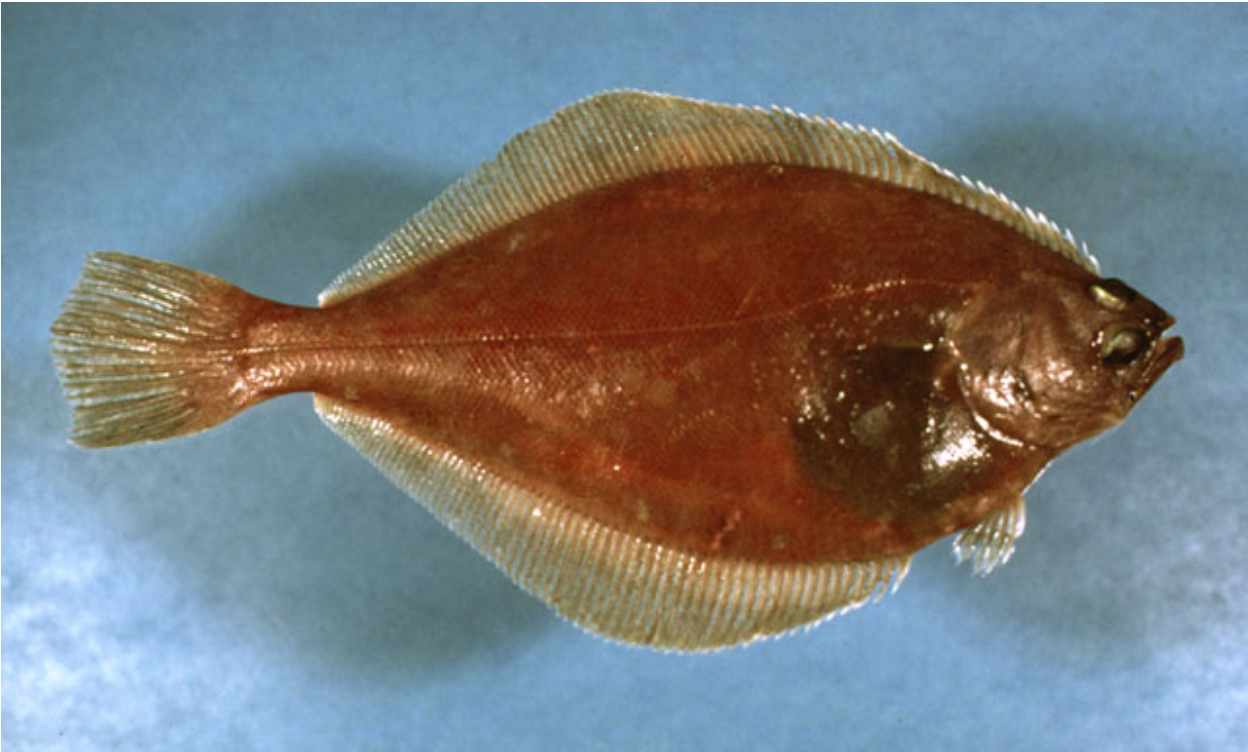American Plaice
Latin Name
Hippoglossoides platessoides
Group Name
Groundfish
Habitat
American plaice are found on both sides of the Atlantic Ocean, although the eastern Atlantic populations are thought to be a subspecies. In the western Atlantic, they range from southern Greenland and Newfoundland and Labrador down to New England. In the eastern Atlantic, they are found from the northern coasts of Finland and Russia to the English Channel. They can tolerate deep water and can be found at depths of up to several thousand metres, however they are primarily found on continental shelves, mostly above 300 metres. They are considered a cold water species, but have a fairly wide temperature tolerance, ranging from about -1.5° Celsius to above 5° Celsius.
Species Description
Like other flatfish, American plaice are laterally compressed, with a body that is fairly oval-shaped and marked with a relatively straight lateral line. They have a large mouth, a rounded tail and a body covered with small, rough scales. Their coloration varies from brown to reddish-brown, sometimes with darker patches or spots, and is pale white on their underside. They may grow as large as 50 centimetres, but they are typically around 30 centimetres. Females generally live 17-20 years.
The centre of abundance of American Plaice is Banquereau on the southeast corner of the Scotian Shelf (in 4Vs), with population density gradually diminishing to the west. Egg and larval distributions suggest that Banquereau is also the primary spawning gound of American Plaice on the Scotian Shelf. Fish within the western 4X management unit are at the outer margins of the population distribution, making little contribution to the overall abundance of Plaice.
Tagging studies and bottom topography indicate that Scotian Shelf Plaice are largely separated from Gulf of Maine, Gulf of St Lawrence, and Grand Banks Plaice by depth barriers. Small areas of shallow water may permit some transfer of Plaice from/to the Gulf of Maine and Gulf of St Lawrence. Tagging demonstrates seasonally constrained overlaps between Gulf of St Lawrence and Scotian Shelf Plaice in the vicinity of Sydney Bight (4Vn), associated with overwintering movements of Gulf of St Lawrence Plaice into the Laurentian Channel. However the two subpopulations do not exhibit overlap during spawning periods. Complicating matters, the population status of Plaice local to Sydney Bight throughout the year is in question - possibly they are reproductively discrete from both Gulf of St Lawrence and Banquereau Plaice.
Severe declines in abundance of American Plaice throughout the Canadian Northwest Atlantic (Grand Banks, Gulf of St Lawrence, Scotian Shelf and Bay of Fundy) prompted the Committee On the Status of Endangered Wilflife In Canada (COSEWIC) to assess the species as Threatened. Abundance of reproductively mature American Plaice declined from the 1970's to the 1990's by 81% in 4VW and 57% in 4X, and the distribution of the mature fish contracted toward Banquereau. We have no indications of a reversal in this distributional trend, which continued even after the decline in abundance of the mature fish had ceased.
Declining age and size at maturity of American Plaice from the 1960's (11.5 yrs at 37.1 cm) through the 1970's (5.7 yrs at 27.2 cm) has been demonstrated across the Scotian Shelf, but with no associated age and maturity data available since 1979 to determine if this trend has continued. These trends initiated long before the cold water events of the 1990's that are sometimes associated with declining age and/or size at maturity of other fish species in the same areas. The decline in size at maturity has reached below the size of recruitment to fisheries, such that plaice now become reproductive before they become susceptible to fishing mortality. This may offer some protection to the species, however growth rate drops off when maturity is attained. Aside from negative implications for potential fishery yields, the decline in age and size at maturity may have ramifications for the genetic structure of the population. It also raises a question of fecundity, as larger fish typically produce more viable offspring than smaller fish.
- Date modified:



